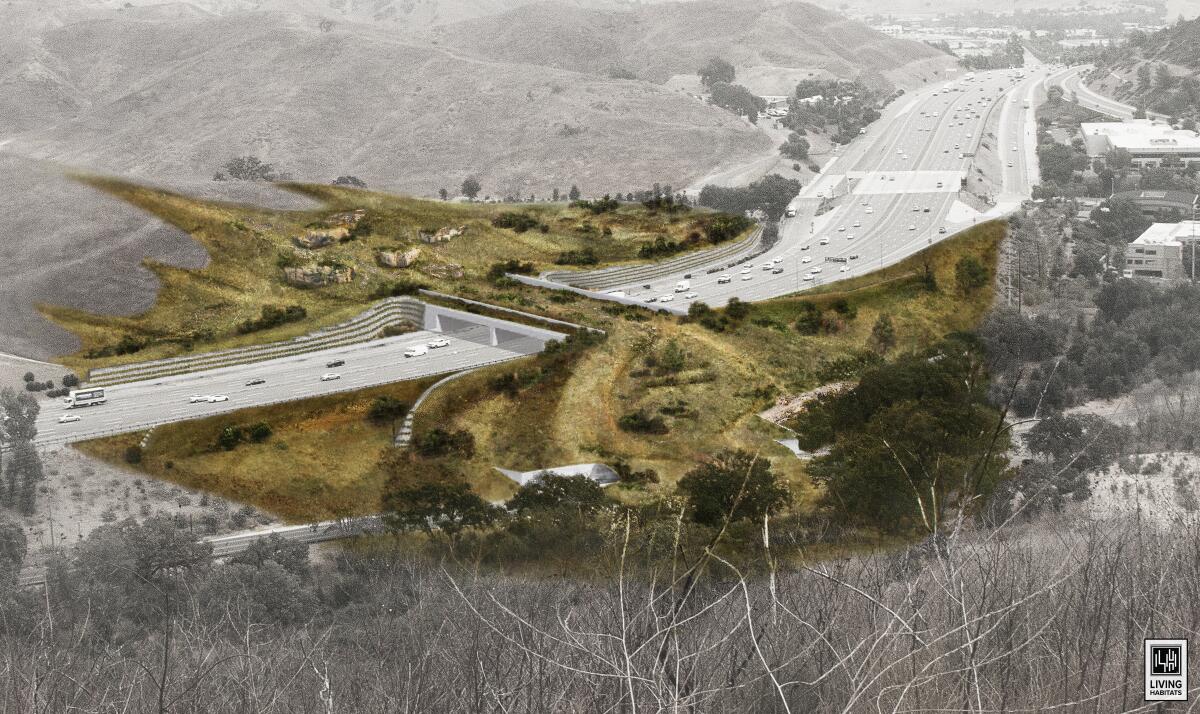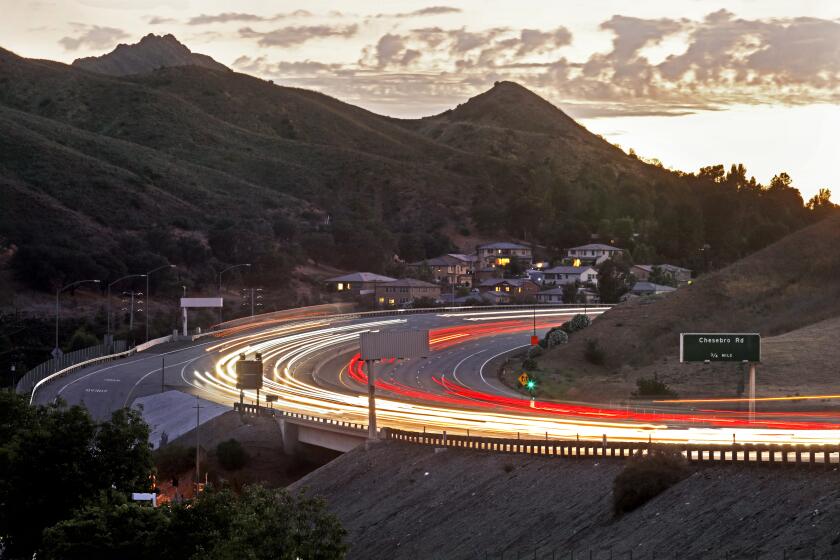New video shows world’s largest wildlife crossing starting to take form

After years of planning and much anticipation, the world’s largest wildlife crossing is starting to take form over the 101 Freeway in Agoura Hills.
New aerial images posted by state transportation officials show the first stages of construction for sound walls and concrete barriers on both sides of the bridge deck, which spans eight lanes of traffic along the Santa Monica Mountains.
Installation of the steel girders were completed back in April, and crews have since been assembling wood forms and placing reinforcing rods in preparation for concrete pouring.

Construction of the $92-million wildlife passage, officially dubbed the Wallis Annenberg Wildlife Crossing, broke ground in 2022 and is set to be completed by early 2026. The 200-foot-long, 165-foot-wide bridge will be the largest of its kind in the world — and will serve as a critical lifeline to the many animals that have attempted to cross the busy freeway.
Earlier this summer, a mountain lion was struck dead not far from where the crossing is being constructed.
Scientists and conservationists say this wildlife passage will also be crucial to restoring gene flow among small, isolated populations of cougars trapped south of the freeway in the Santa Monica Mountains, and cougars confined to the north in the Simi Hills and Santa Susana Mountains.
Architect Robert Rock is designing a bridge over the 101 Freeway in Agoura Hills that will stop mountain lions from becoming roadkill.
There are also signs that other animals are already starting to use the crossing, and a native plant nursery is preparing to seed the bridge with local sages, shrubs, milkweed and other vegetation.
Construction activities are ongoing, and Caltrans officials noted that daytime ramp closures might occur intermittently Mondays through Fridays between 9 a.m. and 3 p.m. at the southbound 101 Liberty Canyon Road offramp and the northbound 101 Liberty Canyon onramp.
Live traffic updates and road closures can be found at QuickMap.dot.ca.gov.
Webcams are also available on the project website, where you can follow the construction progress and spot passing wildlife.












